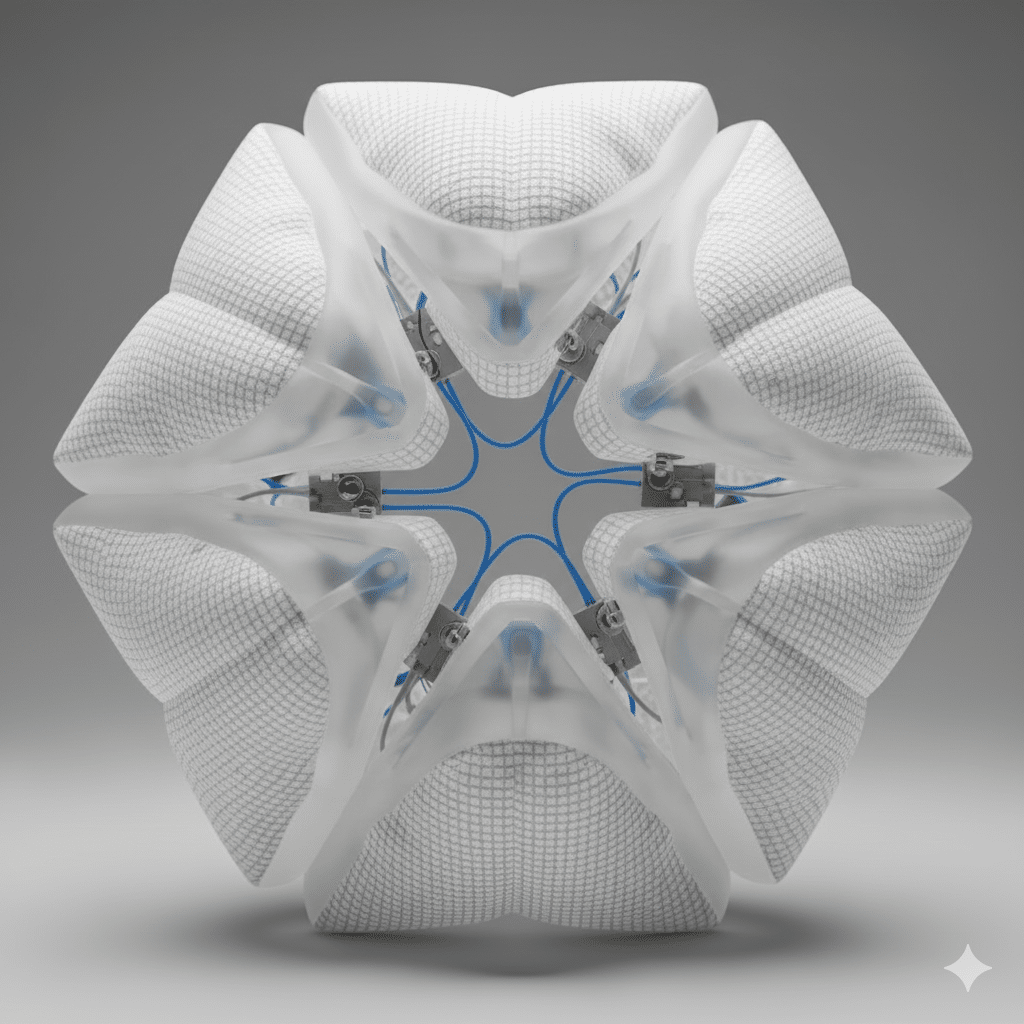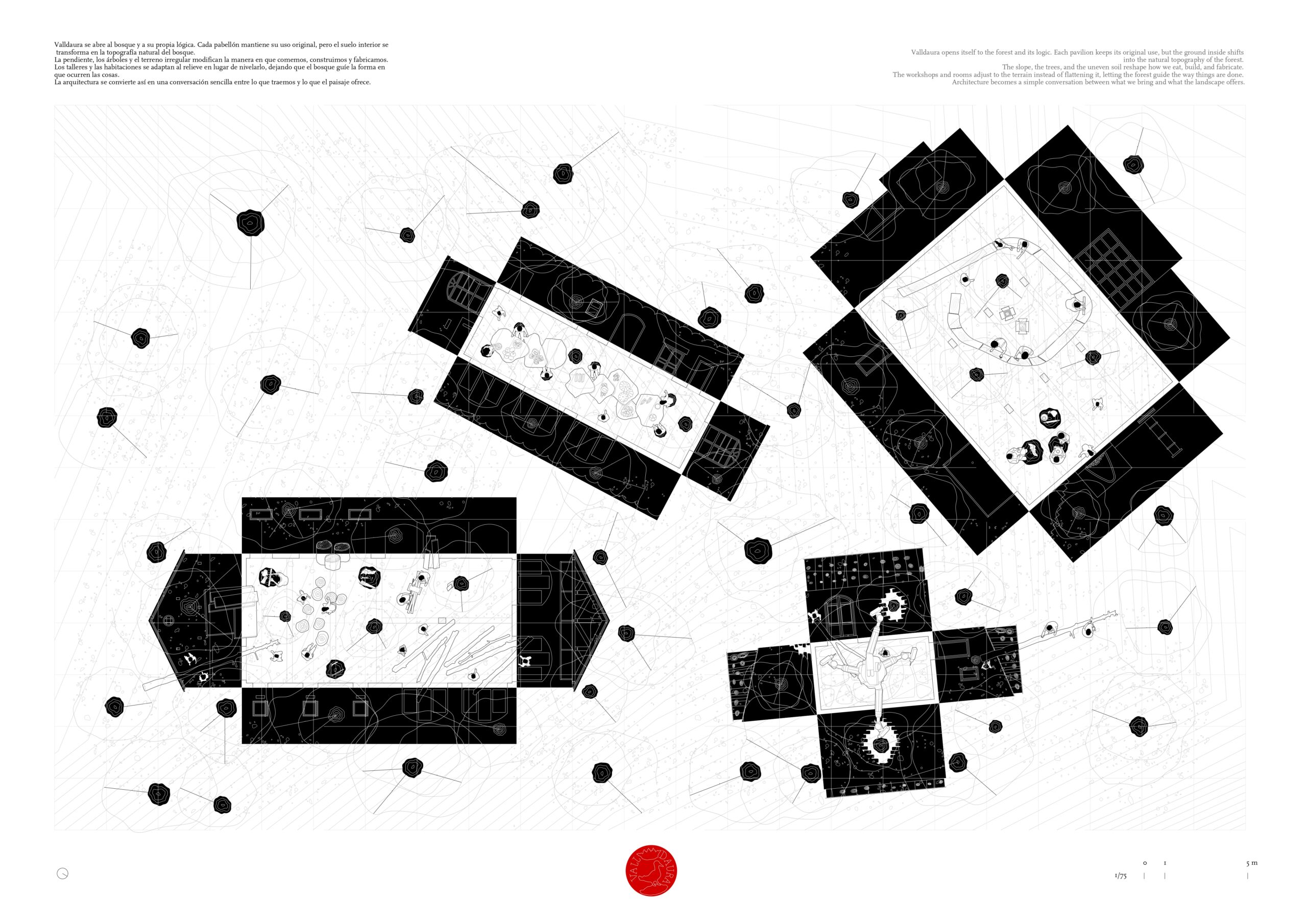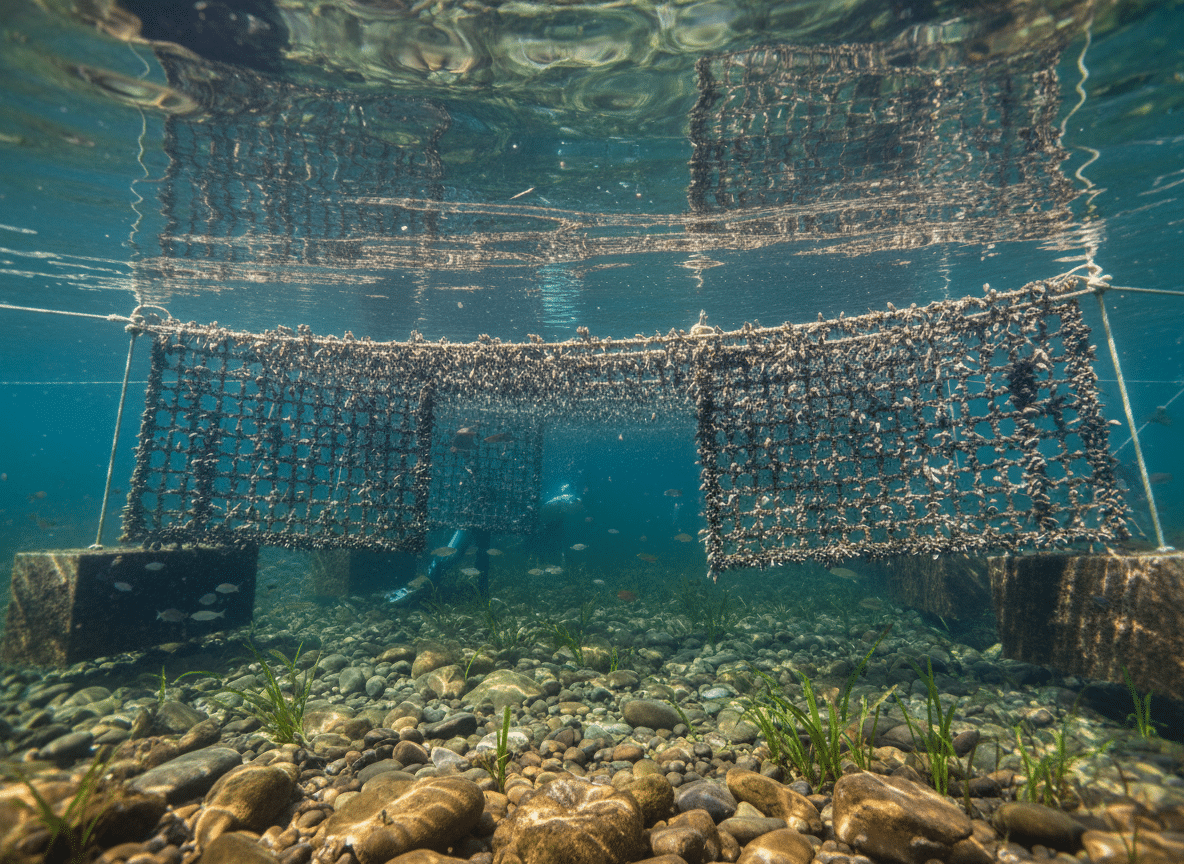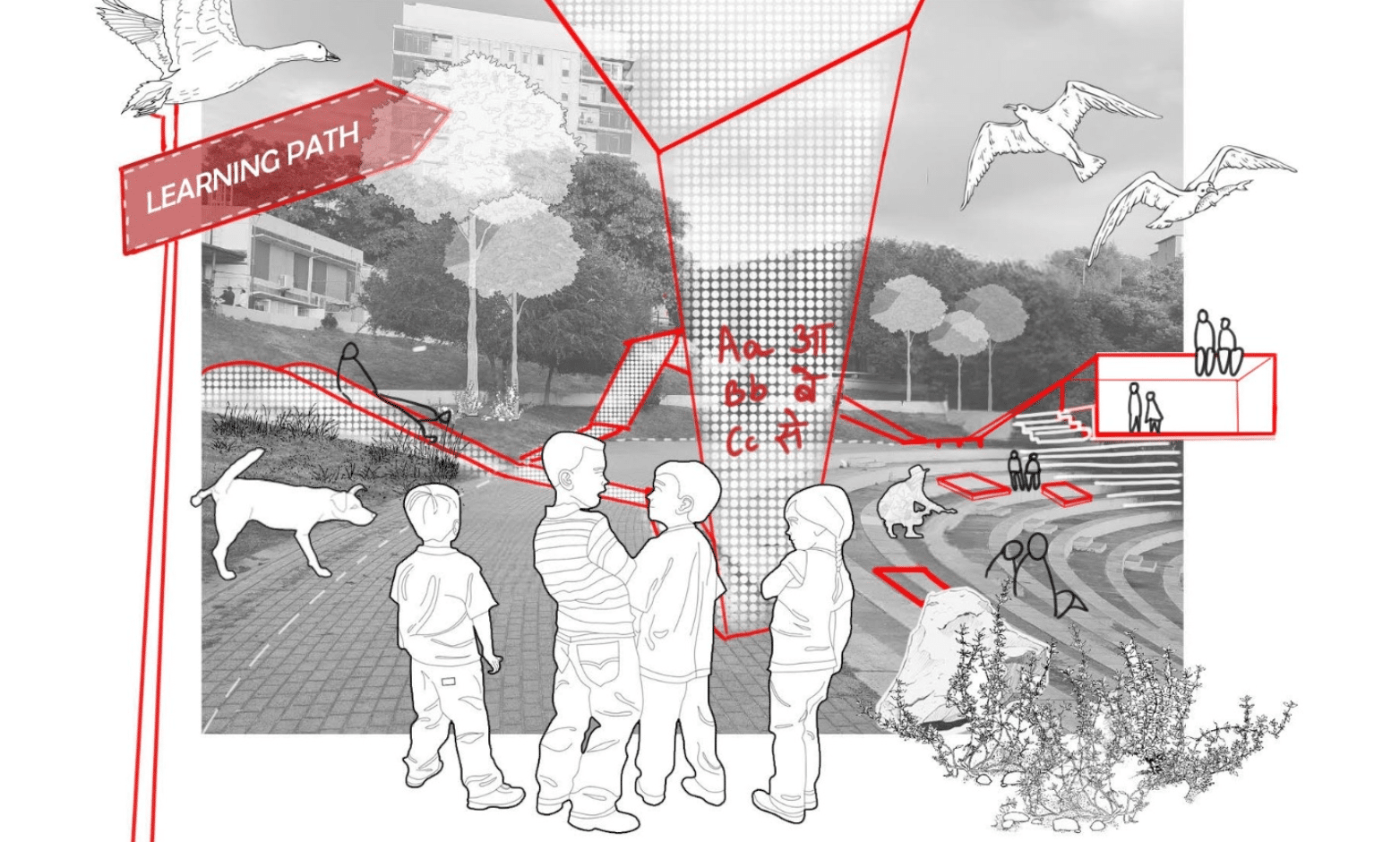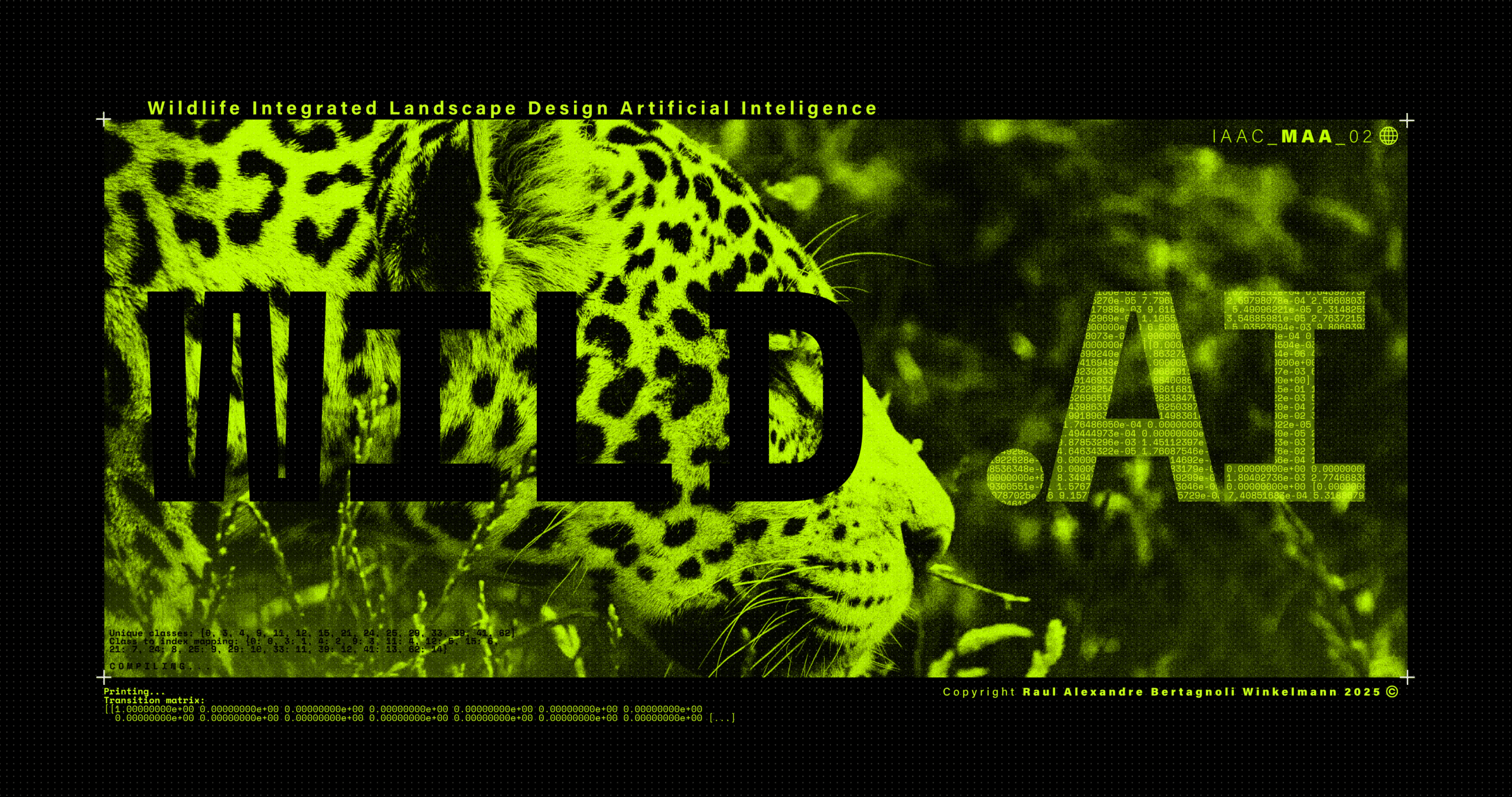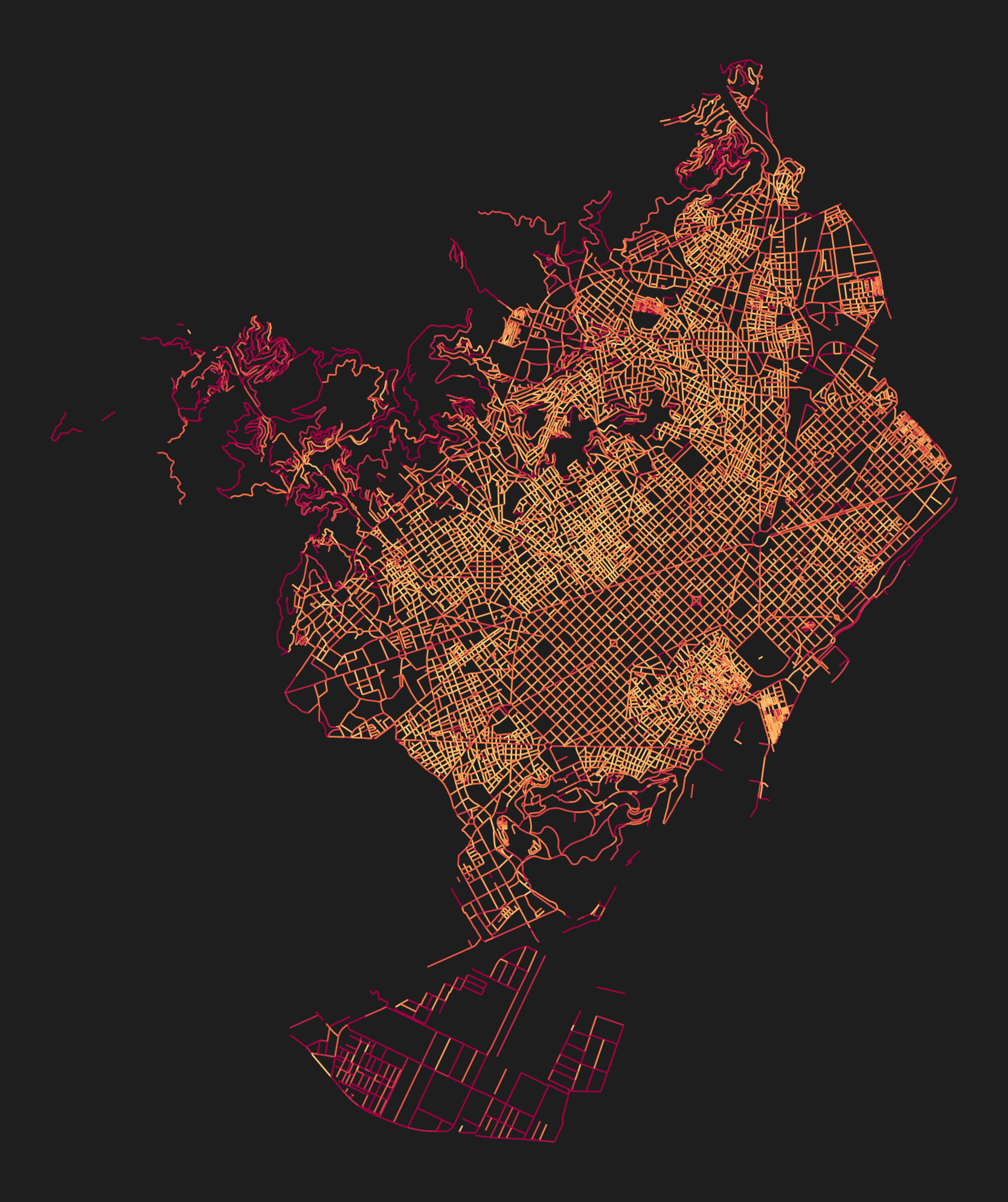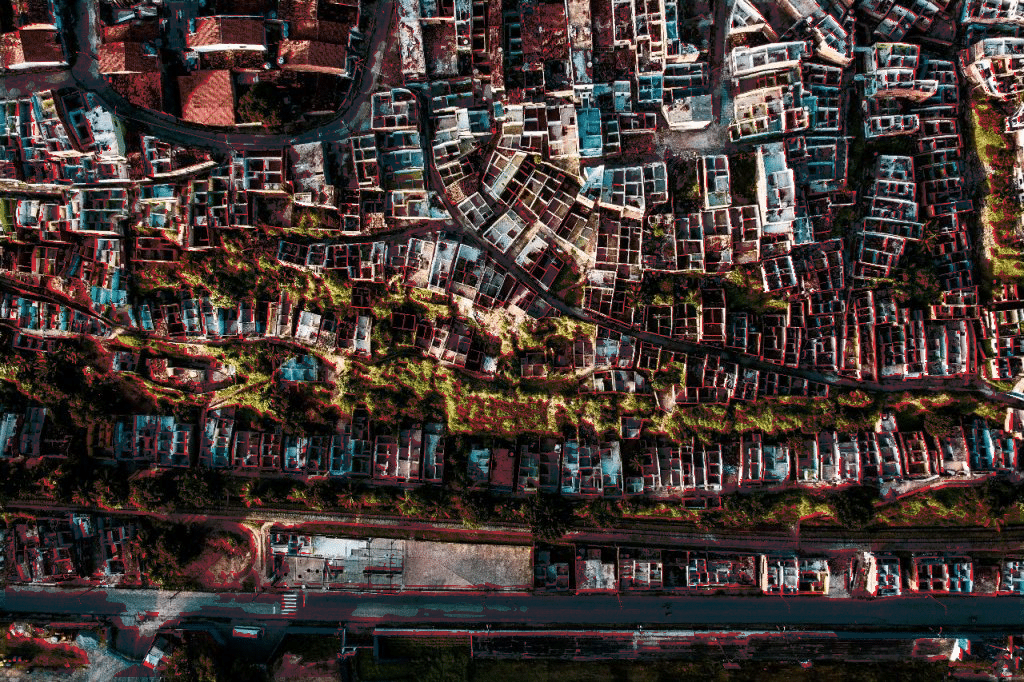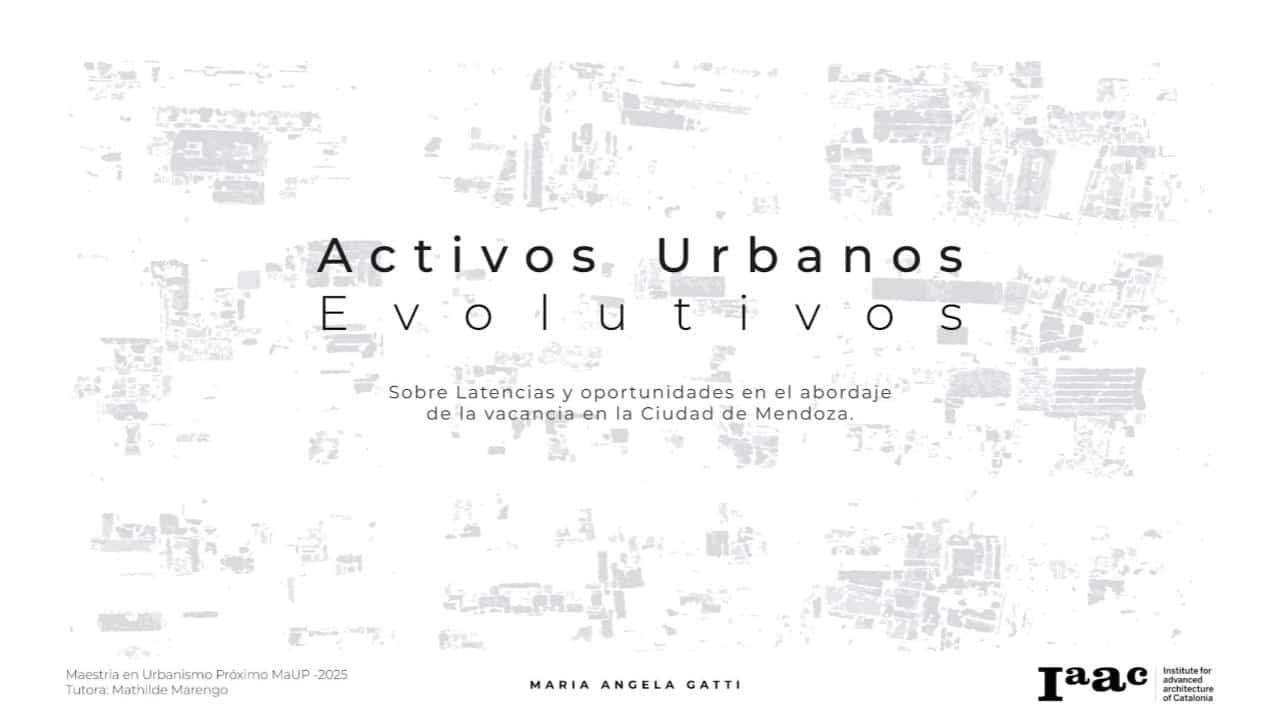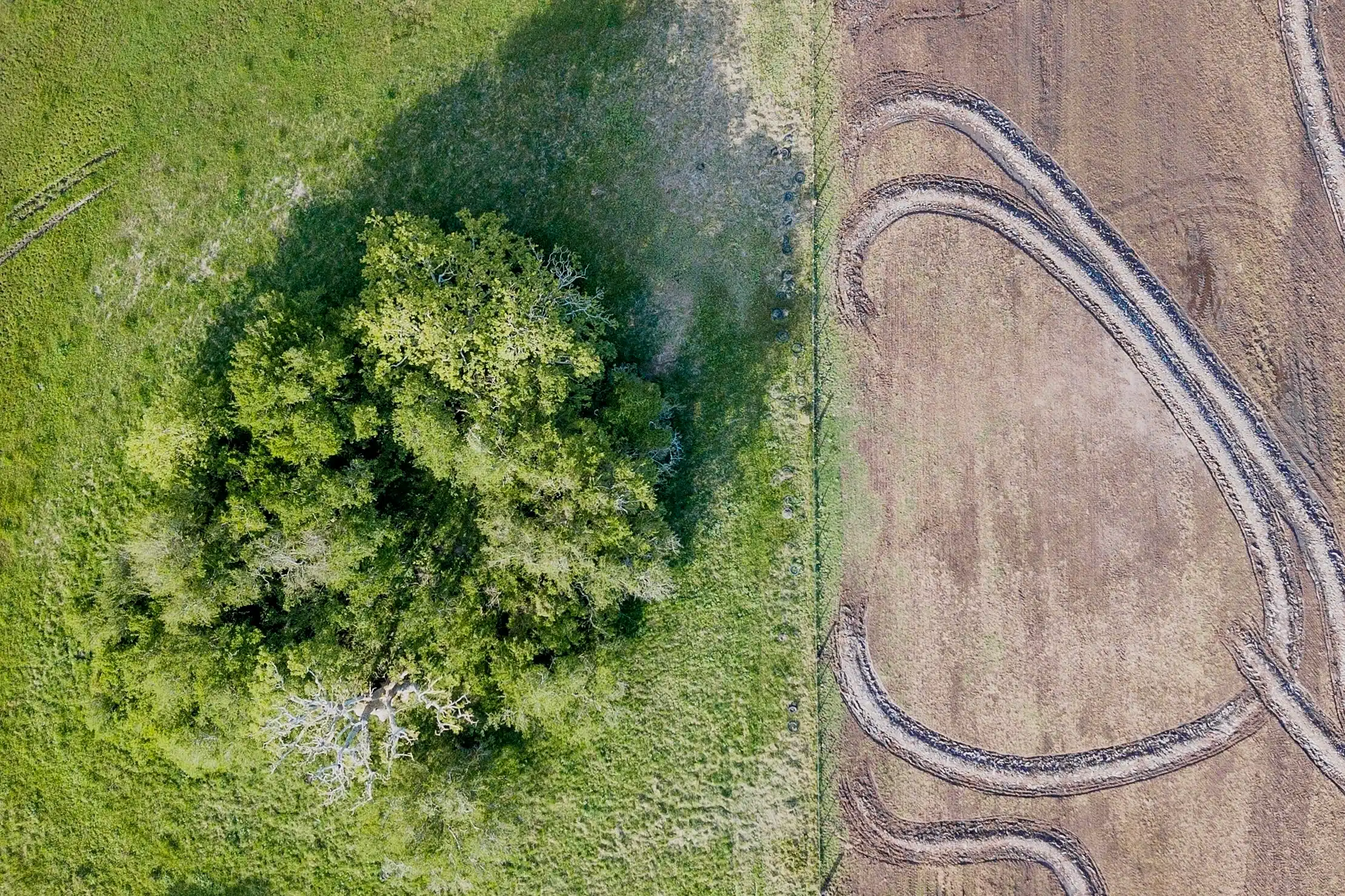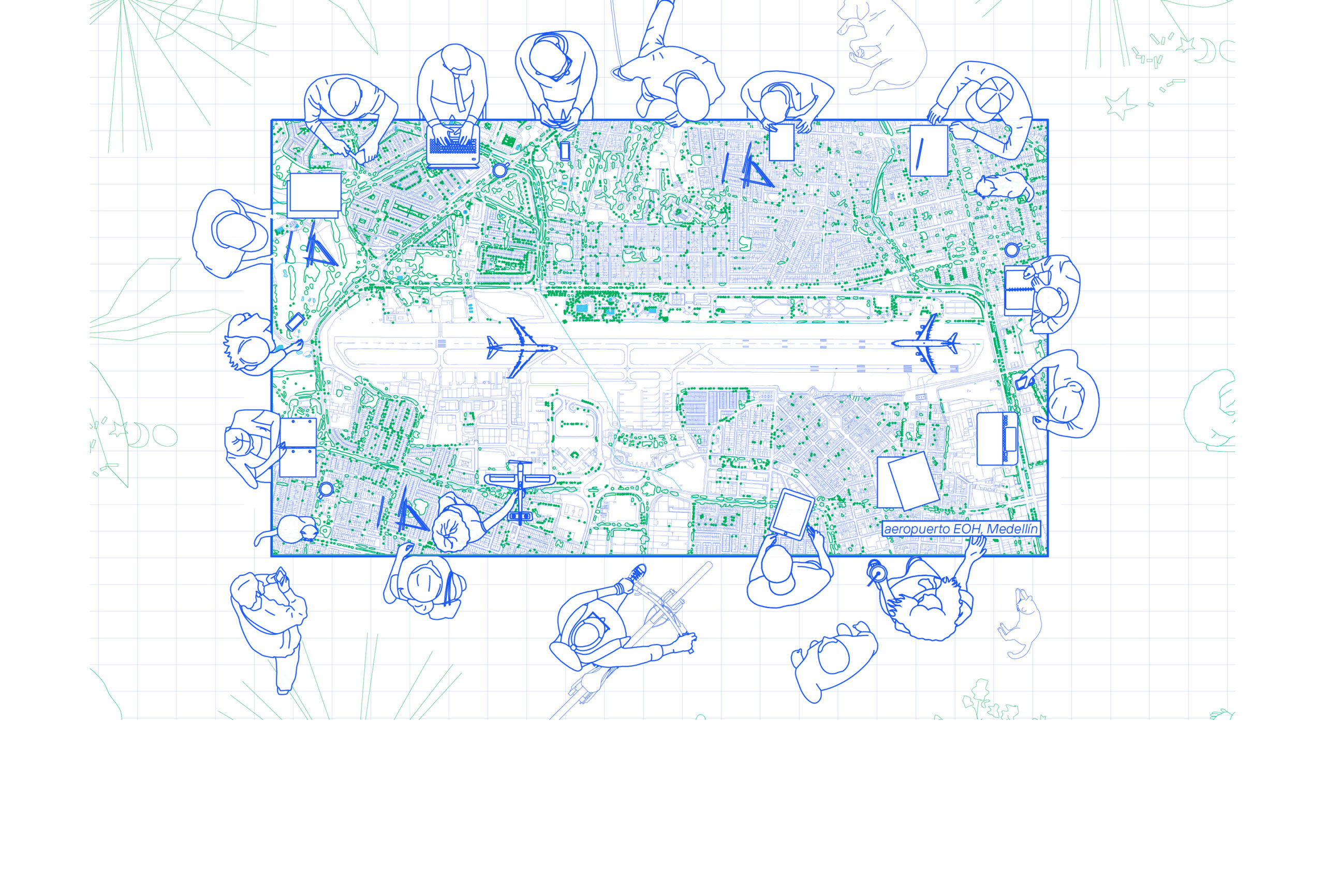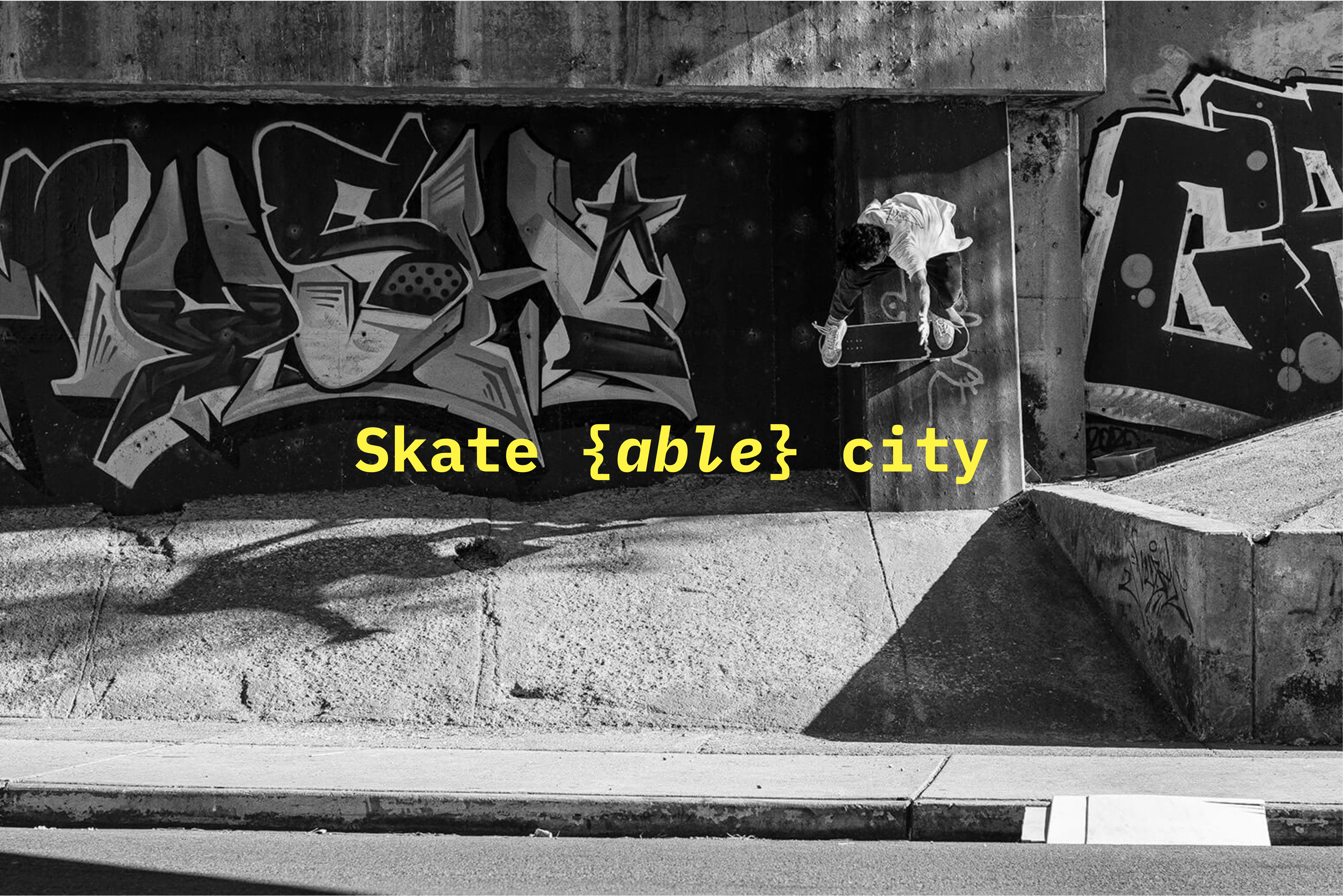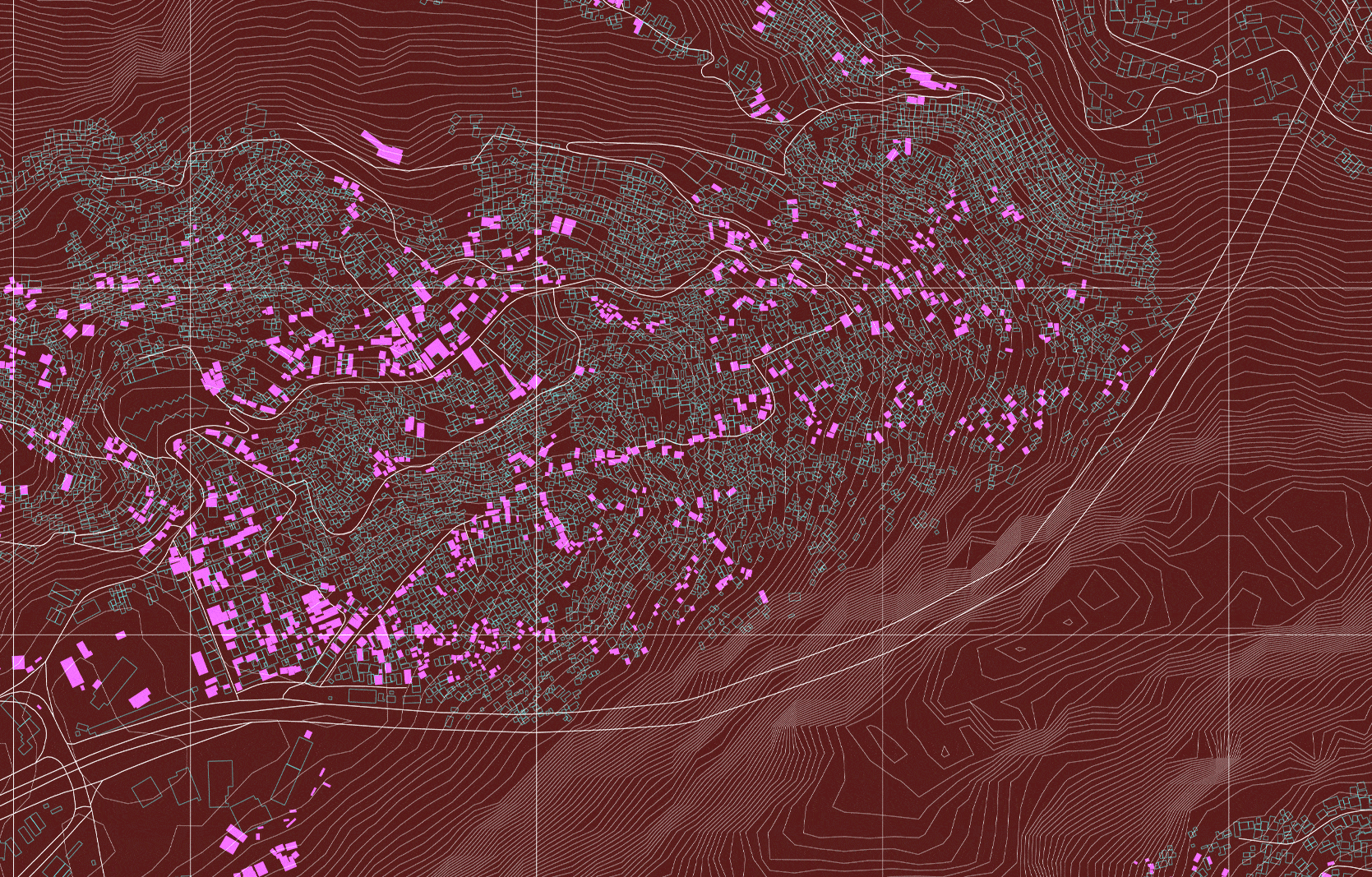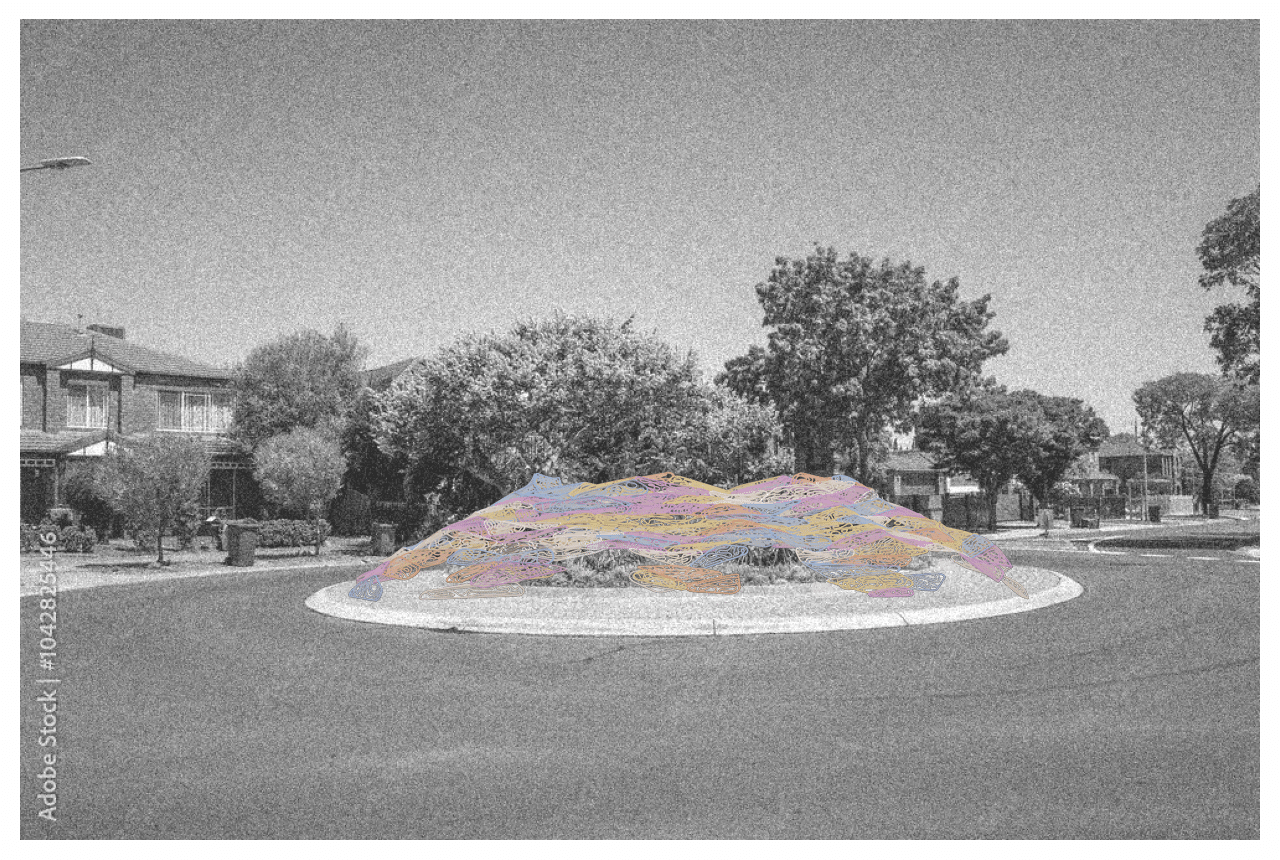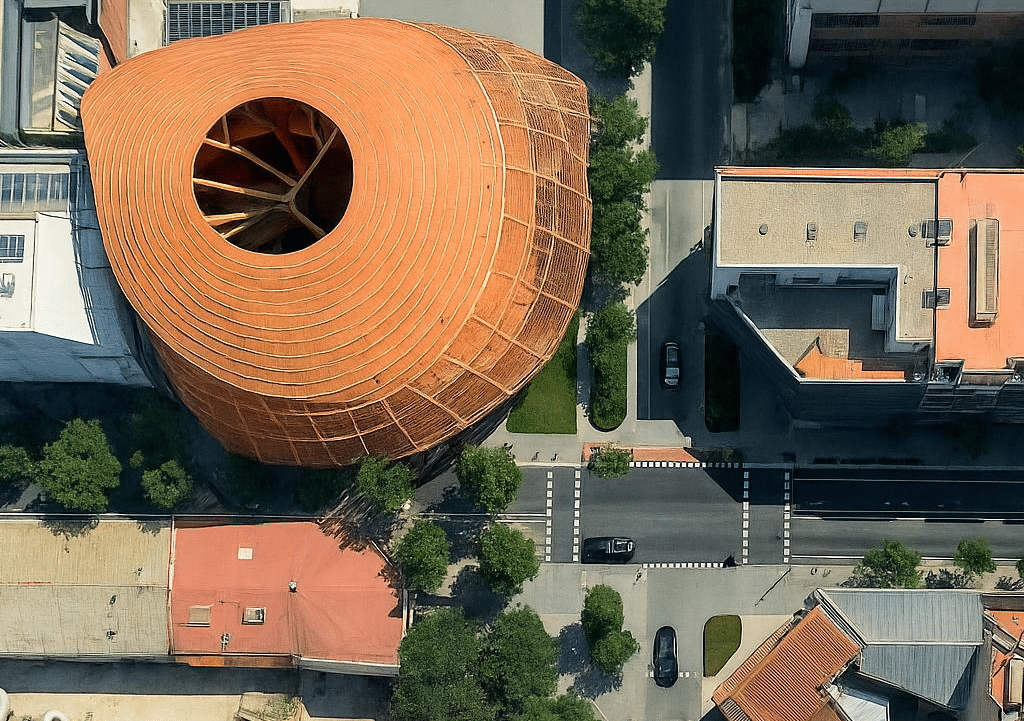Growing Oaks in Collserola Park
At MAEBB We learned how to cut trees, here is how they grow Collserola Natural Park, rising above Barcelona, is home to a diverse Mediterranean ecosystem where oaks are among the most emblematic species. Before the hills were cleared and later populated by pioneering pine trees, the two dominant species were the Holm Oak (Quercus … Read more
Topographies of Work
This drawing explores how architecture transforms when it stops imposing its order and allows the forest to define its own conditions. It explores a shift from “building in a forest” to “building as a forest”. In the drawing Valldaura Lab is not an object placed in the forest, it is an interpreter of the forest … Read more
Connexió (Connection)
Santa Coloma de Gramenet, located to the north of Barcelona, is bordered by the Besòs River on the west and the Marina Mountain Range on the north. The city’s terrain features an irregular relief that rises to 303 meters at Mount Castellar, its highest point, a topographical character also visible within Parc dels Pins. The … Read more
Wildlife Integrating Landscape Design Artificial Intelligence – WILD.AI — Term_III
CONTEXT DYNAMICS METHODOLOGY ANALYSIS By subtracting different scenarios from one another: The differences start to become clear as to what areas are consisently lost vs what areas are inconsistently lost. The latter being the one where planners and ecologists should focus their efforts the most if aiming to potentialize action. The figure becomes even clearer … Read more
Urban Climate on Graphs: From Form to Comfort
ABSTRACT This thesis investigates the relationship between urban development patterns and outdoor thermal comfort, with a focus on Mean Radiant Temperature (MRT), a key factor in calculating the Universal Thermal Climate Index (UTCI). While graph-based approaches have long been used in spatial analysis (e.g., space syntax, circulation networks), this research extends the application of graph … Read more
Territorio en Cura:
El drama socioambiental de la explotación de sal gema en Maceió y la reimaginación de este territorio Resumen Este trabajo analiza el colapso geotécnico y socioambiental causado por la minería de sal-gema en Maceió, Brasil. A partir de datos técnicos, mapas producidos por la autora y relatos comunitarios, propone una lectura crítica del territorio y … Read more
ACTIVOS URBANOS EVOLUTIVOS
Sobre latencias y oportunidades del abordaje de la vacancia en la Ciudad de Mendoza RESUMEN La problemática de los pasivos urbanos, definidos como terrenos subutilizados o infraestructuras obsoletas dentro del tejido urbano, constituye un fenómeno global con implicaciones territoriales y socioeconómicas a escala local. La expansión urbana no planificada, caracterizada por patrones de crecimiento de … Read more
Máquinas metabólicas
más allá del arroz 00 INTRODUCCIÓN: conflicto y oportunidad Este proyecto se sitúa en el noreste de Uruguay, en una porción del departamento de Rocha conocida como India Muerta, dentro de la cuenca de la Laguna Merín. En este territorio coexisten en tensión dos formas de habitar: por un lado, el monocultivo arrocero, un modelo … Read more
Infraestructuras simpoiéticas (iv)
Hacia la reconquista de los No Lugares urbanos: El caso del aeropuerto EOH de Medellín 00 Introducción Las infraestructuras globales Las infraestructuras son uno de los temas centrales dentro de la planeación urbana mundial, 6 de los 17 “Objetivos de Desarrollo Sostenible” establecidos por la ONU están relacionados con ellas. Allí, las definen como “la … Read more
Skate {able} city
Redefinir el espacio público desde el skateboarding: hacia una Integr{able} City En las ciudades contemporáneas, el diseño del espacio público tiende a responder a lógicas de especialización funcional, segmentando sus usos y trazando bordes rígidos entre actividades. Esta fragmentación limita la convivencia, reduce la espontaneidad y empobrece la diversidad de apropiaciones que constituyen la esencia de … Read more
Rootscapes
An exploration of root structures and material study 70% of the world’s population lives along coastlines and rivers, out of which, thousands of people get affected yearly due to erosion. However, our marine ecosystems such as mangroves and soils have the capability of storing large amounts of CO2 and provide a barrier amongst erosion. CAUSES … Read more
EMI: Engine for Morphological Integration
An algorithmic roadmap that converts self-organized settlement morphology into clean-energy action: the Energy-Morphology Index mines open roof- and density data, ranks each building’s readiness, and matches “Ready / Promising / Not-Ready” clusters to modular solar toolkits—turning self-organized settlements into engines of energy justice
Transient Plastics 3.0
The plastic crisis has reached staggering proportions. If all the plastic waste on Earth were laid out, it would be enough to cover the entire surface of Argentina ankle-deep. Every year, we produce 300 million tons of plastic globally. Yet only 10% remains in use, while more than 80% is discarded. Of this discarded plastic, … Read more
THE TERRACOTTA LUNG – Breathing comfort through clay.
Introduction This project explores a double landscape approach, bridging a student accommodation in the city with an ecological extraction site in the Collserola foothills. It establishes a material and climatic dialogue between the two contexts: one as a site of inhabitation, the other as a site of making. At its core is a breathing terracotta … Read more

